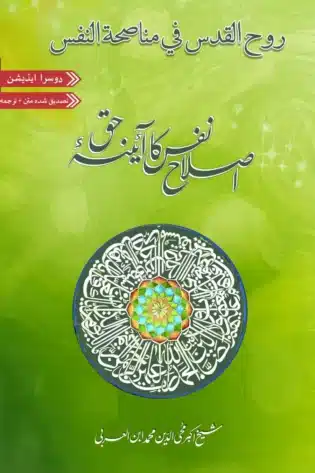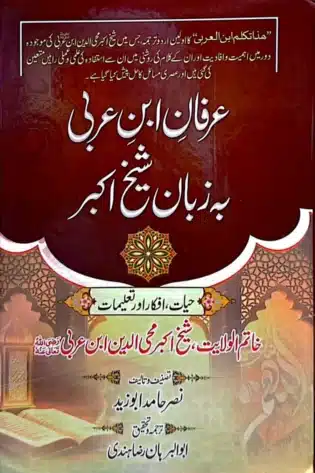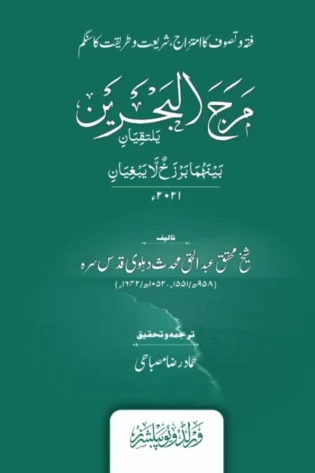- Your cart is empty
- Continue Shopping

Mawaqi al-Nujum | Urdu | Ibn al-Arabi | مواقع النجوم اردو ترجمہ
₨ 1,790 – ₨ 2,500
Add to cartMawaqi al-Nujum | Urdu | Ibn al-Arabi | مواقع النجوم اردو ترجمہ
Sale₨ 1,790 – ₨ 2,500
Frequently Bought Together
Mawaqi al-Nujum
The book was written by Ibn al-‘Arabi, a renowned scholar, during a very significant time – the eleven nights of Ramadan in 595/1199. This meaningful piece of literature was not just any ordinary book, but was specifically dedicated to one of Ibn al-‘Arabi’s most devoted disciples – Badr al-Ḥabashi.
The book is an extensive exposition of the three levels of surrender (islām), faith (īmān), and right action (iḥsān). Within its pages, the author delves deep into the significance of each level and its corresponding degrees of potential realization. One of the author’s notable discussions within the book is on the seven external bodily parts, including eyes, ears, tongue, hands, stomach, genitals, and feet. Ibn al-‘Arabi explains how these different parts can be utilized in the act of Divine praise.
The author also highlights the importance of extending Divine mercy to others, emphasizing that this is the same mercy that has extended over us – hence we should extend it to others. It is important to note that this book is not exclusively meant for disciples but also for masters, as it represents the highest level attainable in the sacred Law of worship. The benefits of this book, according to the author, are immense and those who possess it will find sustenance in its pages with the powerful aid of God.
Manuscript used
Based on the available information, the “best” available manuscripts for Mawaqi al-Nujum appear to be those prioritized in Abrar Ahmed Shahi’s critical edition. Specifically:
- Yusuf Aga 5001: Its authorship by Sadruddin Qunawi, inclusion of Ibn al-Arabi’s signatures, and the presence of samāʿ make it exceptionally significant, despite its physical condition. It offers the closest known link to Ibn al-Arabi’s immediate circle and potentially his own readings or endorsements of the text .
- Bayazet 3750: Its early copying date (782 AH) and explicit lineage tracing back to a manuscript from 596 AH in Qurtaba make it a crucial witness to the early textual tradition of the work, providing a valuable insight into its transmission shortly after its composition .
- Shehit Ali 1431: Its relatively early date (676 AH), clarity, comprehensive nature, and stylistic features suggesting a direct replication from Ibn al-Arabi’s original manuscript contribute to its importance as a reliable source .
- Majlis shora milli 594: Despite being incomplete, its early transcription date (653 AH, based on a 606 AH copy) and claim of originating from Ibn al-Arabi’s writings make it a valuable manuscript that could preserve early and potentially authentic readings .
These manuscripts, forming the core of Abrar Ahmed Shahi’s critical edition, stand out due to their age, proximity to the author and his immediate circle, and features that suggest a high degree of accuracy in their transmission of the text. While other manuscripts exist, the detailed attention given to these specific copies in the new critical edition, along with the reasons provided for their selection, indicates their significance for establishing a reliable text of Mawaqi al-Nujum.
| Weight | 0.9 kg |
|---|---|
| Langauge | |
| Binding | |
| Book Size | |
| Paper type | |
| Printing Quality | |
| Publisher | |
| Edition |
8 reviews for Mawaqi al-Nujum | Urdu | Ibn al-Arabi | مواقع النجوم اردو ترجمہ
Shipping & Returns Policy
Shipping
Pakistan, Major Cities: 1-3 working days
Villages and Small Cities: 2-4 working days
Order before 2.30pm and your order will be dispatched on the same
working day (Mon-Fri excluding public holidays).
We will ship your order from Call Courier Service.

Returns & Exchanges
All returns must be postmarked within seven (7) days of the purchase date. All returned items must be in new and unused condition, with all original tags and labels attached.
To return an item, please email customer service at admin@ibnularabibooks.com
Please place the item securely in its original packaging and include your proof of purchase, and mail your return to the following address:
Ibn Al Arabi Foundation
ho no 123 st 7 Ch Jan Colony Chaklala scheme 3
Rawalpindi, Punjab,
Please note, you will be responsible for all return shipping charges. We strongly recommend that you use a trackable method to mail your return.
Damaged or Defective Products
Please return any item purchased from ibnularabibooks.com that arrives to you damaged or defective, or isn’t what you have ordered.









Abrar Ahmed Shahi (verified owner) –
اس کتاب کی تعریف کرتے ہوئے شیخ اکبر فتوحات مکیہ میں فرماتے ہیں:
“میں نے اِسے شہر المریہ میں رمضان المبارک سن 595 ھ کے گیارہ ایام میں تالیف کیا۔ یہ (کتاب) شیخ سے بے نیاز کرتی ہے بلکہ شیخ کو اس کی ضرورت ہے، بے شک شیوخ میں عالی بھی ہیں اور اعلی بھی، اور یہ کتاب اس اعلی مقام پر ہے کہ جس پر کوئی شیخ ہو سکتا ہے، کہ (ہماری) شریعت میں اِس سے آگے کوئی مقام نہیں، جس کا ہمیں مکلف کیا گیا۔سو یہ (کتاب) جس کے ہاتھ لگے تو اُسے چاہیے کہ اِس پر توفیق الہی سے اعتماد کرے؛ کیونکہ اِس کا فائدہ عظیم ہے۔ اور میں تجھے اس کی منزلت کی پہچان اسی لیے کروا رہا ہوں کیونکہ میں نے حق تعالی کو خواب میں دو مرتبہ دیکھا، اور وہ مجھے کہہ رہا تھا: “میرے بندوں کو نصیحت کر۔” یہ وہ سب سے بڑی نصیحت ہے جو میں نے تجھے کی، اللہ ہی توفیق دینے والا ہے اور اسی کے ہاتھ ہدایت ہے، ہمارے ہاتھ تو کچھ نہیں۔
Ahsan –
An excellent spiritual classic!